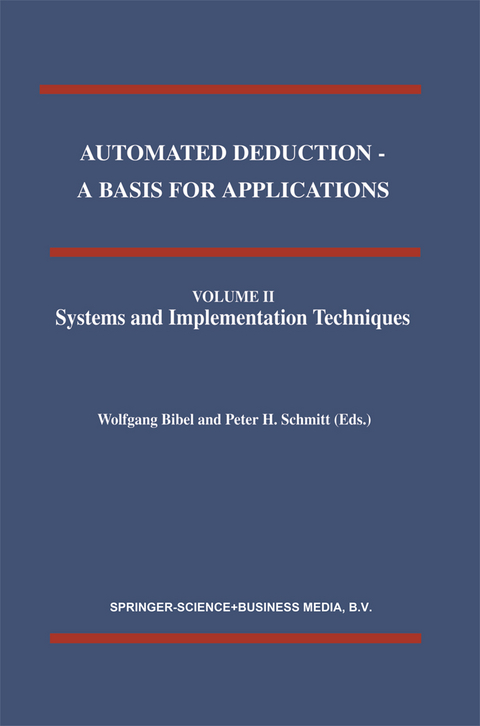
Automated Deduction - A Basis for Applications Volume I Foundations - Calculi and Methods Volume II Systems and Implementation Techniques Volume III Applications
Springer (Verlag)
978-0-7923-5130-6 (ISBN)
One Interactive Theorem Proving.- 1. Structured Specifications and Interactive Proofs with KIV.- 2. Proof Theory at Work: Program Development in the Minlog System.- 3. Interactive and automated proof construction in type theory.- 4. Integrating Automated and Interactive Theorem Proving.- Two Representation and Optimization Techniques.- 5. Term Indexing.- 6. Developing Deduction Systems: The Toolbox Style.- 7. Specifications of Inference Rules: Extensions of the PTTP Technique.- 8. Proof Analysis, Generalization and Reuse.- Three Parallel Inference Systems.- 9. Parallel Term Rewriting with PaReDuX.- 10. Parallel Theorem Provers Based on SETHEO.- 11. Massively Parallel Reasoning.- Four Comparision and Cooperation of Theorem Provers.- 12. Extension Methods in Automated Deduction.- 13. A Comparison of Equality Reasoning Heuristics.- 14. Cooperating Theorem Provers.
| Erscheint lt. Verlag | 30.6.1998 |
|---|---|
| Reihe/Serie | Applied Logic Series ; 9 | Automated Deduction - A Basis for Applications Volume I Foundations - Calculi and Methods Volume II Systems and Implementation Techniques Volume III Applications ; BD II | 1.30 |
| Zusatzinfo | XIV, 434 p. |
| Verlagsort | Dordrecht |
| Sprache | englisch |
| Maße | 156 x 234 mm |
| Themenwelt | Geisteswissenschaften ► Philosophie ► Allgemeines / Lexika |
| Geisteswissenschaften ► Philosophie ► Logik | |
| Informatik ► Theorie / Studium ► Künstliche Intelligenz / Robotik | |
| Mathematik / Informatik ► Mathematik ► Logik / Mengenlehre | |
| ISBN-10 | 0-7923-5130-4 / 0792351304 |
| ISBN-13 | 978-0-7923-5130-6 / 9780792351306 |
| Zustand | Neuware |
| Haben Sie eine Frage zum Produkt? |
aus dem Bereich


